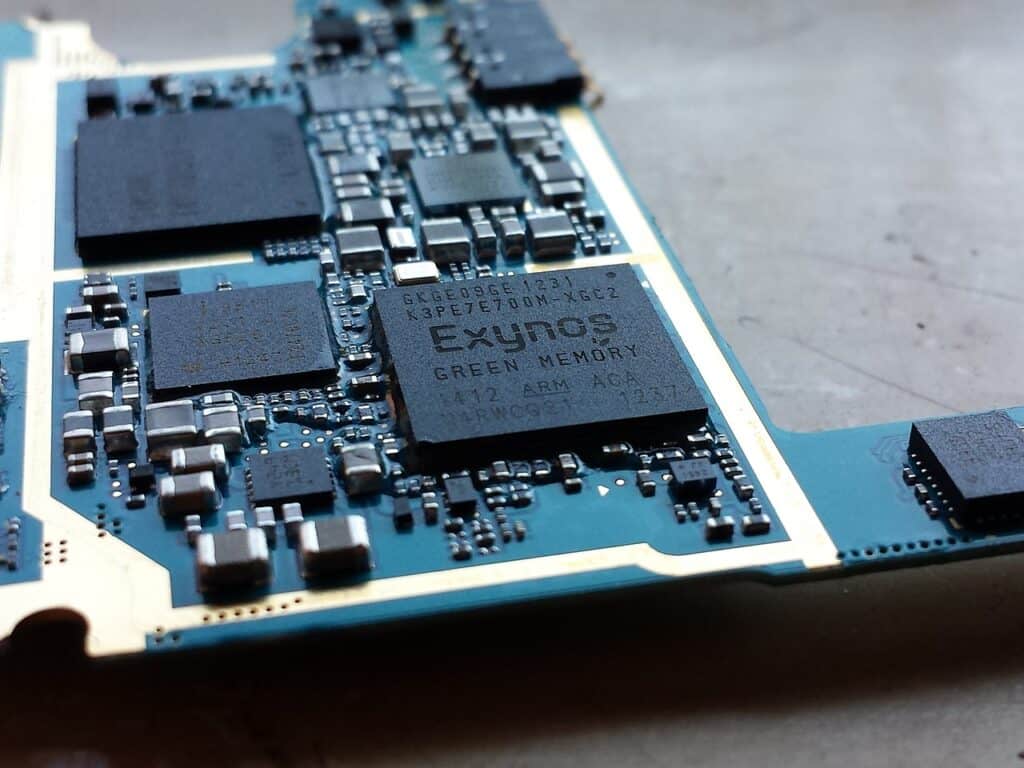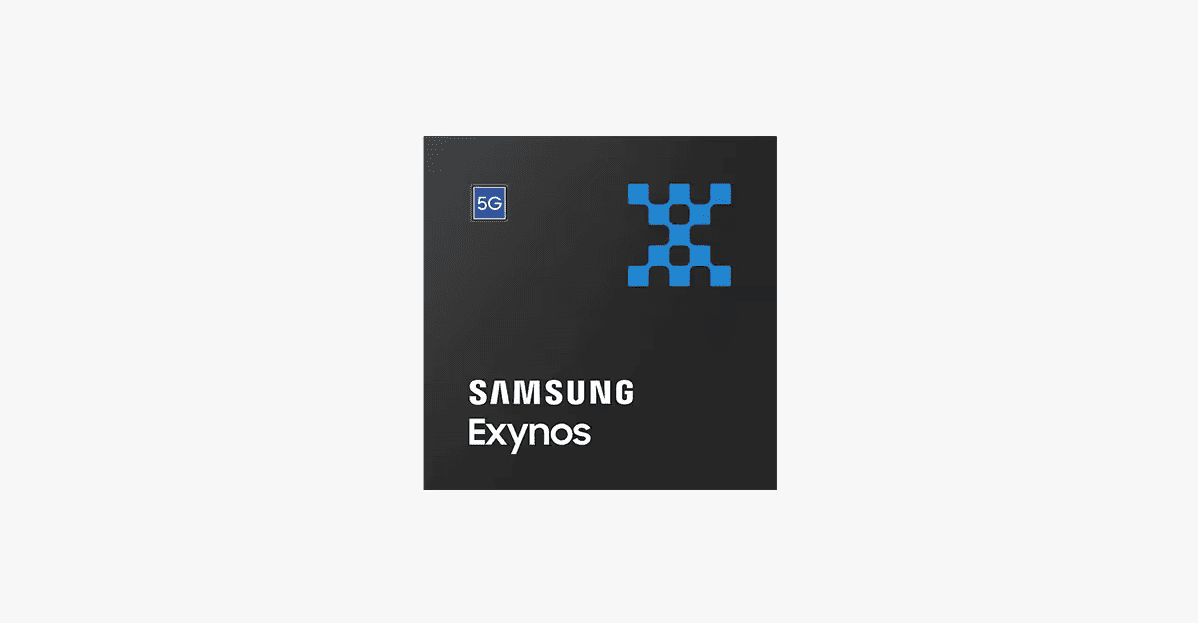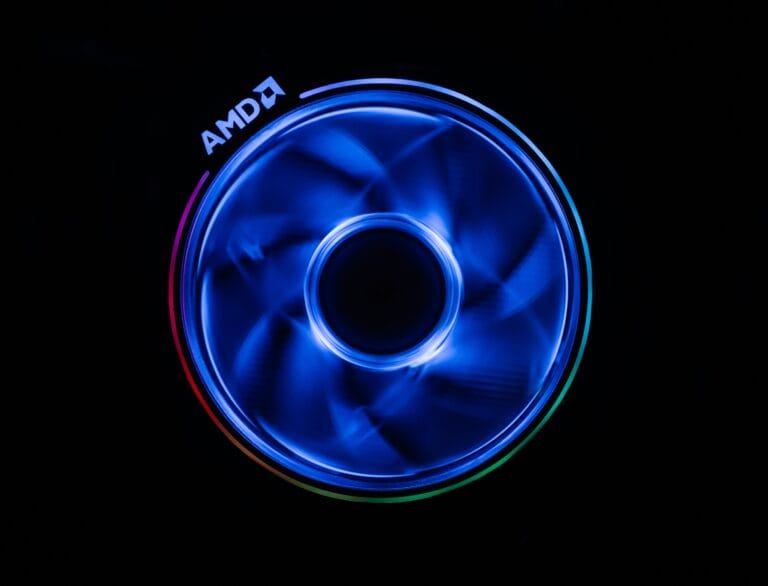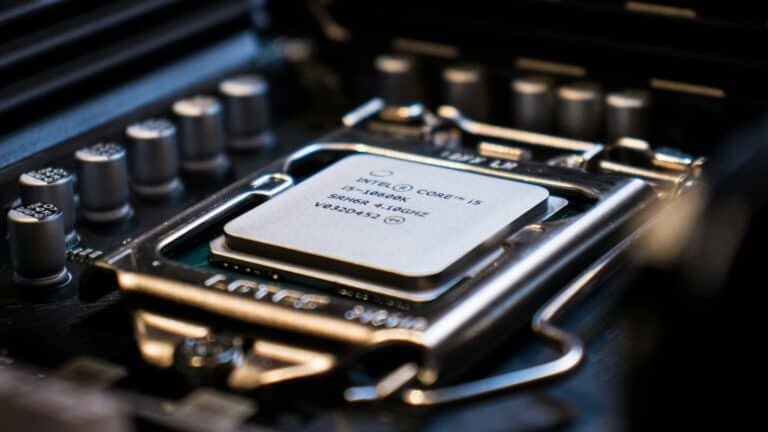Samsung’s Exynos 1480 chipset is poised to redefine the mid-range smartphone market. With its impressive performance benchmarks and advanced features, it stands as a testament to Samsung’s commitment to innovation and quality. This article explores the Exynos 1480 in-depth, examining its technical specifications, performance, and impact on the market.
Comparing the Samsung Exynos 1480
Samsung’s Exynos 1480 chipset is aimed squarely at the mid-range smartphone market, promising boosted performance and efficiency over previous models. Here’s a look at the Exynos 1480’s specifications and how it stacks up against some of its competitors.
Key Features of the Exynos 1480
- Process: Built on Samsung’s 4nm process.
- CPU: Octa-core with four Cortex-A78 cores (clocked at 2.75GHz) and four Cortex-A55 cores (clocked at 2GHz).
- GPU: AMD RDNA-based Xclipse 530 GPU.
- Modem: Integrated 5G modem with support for both sub-6GHz and mmWave networks.
- Camera support: Up to 200MP sensors.
How Does it Compare?
Here’s a table outlining how the Exynos 1480 compares to a few other popular chipsets:
| Chipset | Manufacturer | CPU | GPU | Process |
|---|---|---|---|---|
| Exynos 1480 | Samsung | 4x Cortex-A78 @ 2.75GHz <br> 4x Cortex-A55 @ 2GHz | AMD Xclipse 530 | 4nm |
| Snapdragon 778G+ | Qualcomm | 1x Cortex-A78 @ 2.5GHz <br> 3x Cortex-A78 @ 2.4GHz <br> 4x Cortex-A55 @ 1.8GHz | Adreno 642L | 6nm |
| Dimensity 1080 | MediaTek | 2x Cortex-A78 @ 2.6GHz <br> 6x Cortex-A55 @ 2GHz | Mali-G68 MC4 | 6nm |
Performance and Efficiency
The Exynos 1480 promises significant improvements in both CPU and GPU power, according to Samsung, thanks to the faster Cortex-A78 cores and powerful AMD graphics. The 4nm process should also contribute to better power efficiency compared to older 5nm models.
5G Connectivity
The integrated 5G modem in the Exynos 1480 supports fast download and upload speeds on both sub-6GHz and mmWave 5G networks. This puts it on par with its Snapdragon and Dimensity rivals.
The Bottom Line
The Samsung Exynos 1480 looks to be a solid mid-range chipset option. It may offer compelling value for consumers seeking better performance for gaming, photography, and 5G in mid-priced phones. Of course, real-world benchmarks will be needed to definitively compare the Exynos 1480 to its competitors.
Exynos 1480 vs. Previous Generations
| Feature | Exynos 1480 | Exynos 1280 | Exynos 1080 | Notes |
|---|---|---|---|---|
| Process Technology | 5nm EUV | 5nm EUV | 5nm EUV | Latest technology, improved power efficiency |
| CPU Cores | 4 Cortex-A78 (2.8GHz) + 4 Cortex-A55 (2.0GHz) | 4 Cortex-A78 (2.4GHz) + 4 Cortex-A55 (2.0GHz) | 3 Cortex-A78 (2.4GHz) + 4 Cortex-A55 (2.0GHz) | More powerful A78 cores in 1480 for better performance |
| GPU | Arm Mali-G68 (6 cores) | Arm Mali-G68 (4 cores) | Arm Mali-G68 (3 cores) | More GPU cores in 1480 for potentially better graphics performance |
| AI Engine | Tri-core Tri-Cache NPU | Tri-core Tri-Cache NPU | Dual-core NPU | Improved NPU for faster on-device AI processing |
| ISP | Improved HDR & low-light performance | Dual 4-channel ISP | Single 4-channel ISP | Potentially better image processing capabilities in 1480 |
| Cellular connectivity | Integrated 5G modem with improved speeds | Integrated 5G modem | No integrated 5G modem (relies on external chip) | More advanced 5G capabilities in 1480 |
| Overall Performance | Expected boost in CPU, GPU, and AI performance compared to previous generations | Good mid-range performance | Lower mid-range performance | Improved overall performance and capabilities |
| Devices using | Not yet released | Galaxy A33 5G, Galaxy A53 5G | Vivo X60 Pro, Vivo X60 | Higher-end smartphones in the future |
Additional Notes:
- Benchmarks and real-world performance comparisons are not yet available for the Exynos 1480.
- The improved features and performance of the Exynos 1480 come at the cost of potentially higher power consumption compared to previous generations.
- The choice between Exynos 1480 and previous generations depends on your priorities and budget. If you need the latest features and best performance, the Exynos 1480 is a good option. However, if you are on a tighter budget or prioritize battery life, previous generations might still be suitable.
Key Takeaways
- Impressive Performance: The Exynos 1480 delivers performance comparable to higher-end models like the Exynos 2200.
- Advanced Architecture: Incorporating a sophisticated core layout and GPU, it promises efficiency and power.
- Market Impact: Set to feature in devices like the Galaxy A35 and A55, it’s expected to influence the mid-range segment significantly.
Introduction to Exynos 1480
Overview and Anticipation
The Exynos 1480 emerges as Samsung’s latest innovation in the chipset arena. Designed for mid-range smartphones, it promises to bring high-end performance to more affordable devices. This chipset is not just an upgrade; it’s a leap forward in Samsung’s chipset evolution.
Context and Significance
In the landscape of smartphone processors, the Exynos 1480 is a game-changer. It stands out not only in Samsung’s lineup but also in the broader market, offering a performance that rivals its predecessors, the Exynos 2100 and 2200.
Expected Devices
The Galaxy A35 and A55 are set to be the first to boast this new chipset. These devices, known for their balance of performance and affordability, will likely set new benchmarks in the mid-range category.
Technical Analysis and Performance
Benchmarking Insights
The Geekbench scores for the Exynos 1480 are nothing short of impressive. With a single-core score of 1,180 and a multi-core score of 3,536, it stands toe-to-toe with the Exynos 2200 and surpasses the 2100. This performance is a clear indicator of its capabilities.

Architecture and Efficiency
The Exynos 1480 maintains a 4×A55 + 4×A78 core layout, clocked at 2.05 GHz and 2.75 GHz, respectively. This configuration not only ensures robust performance but also optimizes power efficiency, making it ideal for the modern smartphone user.
GPU Performance
The chipset’s GPU, the Xclipse 530, is based on AMD’s RDNA2/3 architecture. With 1WGP/2CU’s, it promises to deliver a balanced performance, suitable for both everyday tasks and more demanding applications like gaming.
Market Implications and Consumer Impact
Market Positioning
The Exynos 1480 is set to make a significant impact on the mid-range market. Its introduction reflects Samsung’s strategy to bring high-end features to more accessible price points, potentially reshaping consumer expectations in this segment.
Consumer Expectations
Users can expect a smooth and responsive experience, whether they’re browsing, gaming, or using productivity apps. The Exynos 1480 is likely to raise the bar for what consumers expect from mid-range devices.
Comparison with Competitors
When compared to offerings from MediaTek and Qualcomm, the Exynos 1480 holds its own. It’s a testament to Samsung’s ability to innovate and compete in a fiercely competitive market.
In-Depth Look at Exynos 1480’s Capabilities
Performance Benchmarks
The Exynos 1480’s Geekbench scores are a testament to its capabilities. It not only matches but in some cases, surpasses its predecessors and competitors. This level of performance in a mid-range chipset is unprecedented.
Core Configuration
The chipset’s 8-core configuration, with a mix of A55 and A78 cores, strikes the perfect balance between power and efficiency. This setup ensures that the Exynos 1480 can handle a wide range of tasks with ease.
GPU Innovations
The inclusion of the Xclipse 530 GPU is a significant move. It brings AMD’s renowned graphics technology to the mid-range market, offering enhanced gaming and multimedia experiences.
Anticipated Devices and User Experience
Galaxy A35 and A55
The Galaxy A35 and A55, equipped with the Exynos 1480, are expected to offer a premium experience at a mid-range price. These devices will likely appeal to a broad audience, from casual users to tech enthusiasts.
User Experience Expectations
Users can expect a seamless and fluid experience, with fast app loading times, smooth gaming, and efficient multitasking. The Exynos 1480 is set to redefine what users expect from mid-range devices.
Impact on the Smartphone Market
The introduction of the Exynos 1480 is likely to influence the strategies of other manufacturers, pushing the boundaries of what is possible in the mid-range segment.
Advanced Technical Features of Exynos 1480
Enhanced Connectivity and AI Capabilities
The Exynos 1480 is not just about raw power; it’s also about smart performance. With advanced AI capabilities, it promises to deliver a more personalized and efficient user experience. Its connectivity features are also top-notch, ensuring fast and reliable internet access.
Energy Efficiency and Sustainability
One of the standout features of the Exynos 1480 is its energy efficiency. This not only leads to longer battery life but also aligns with the growing demand for sustainable technology solutions.
User Experience and Real-World Performance
Everyday Usage and Multitasking
For the average user, the Exynos 1480 offers a smooth and responsive experience. Whether it’s browsing, social media, or multitasking, this chipset handles it all with ease.
Gaming and Multimedia
Gamers and multimedia enthusiasts will appreciate the Exynos 1480’s capabilities. With its powerful GPU and efficient architecture, it delivers a high-quality gaming experience and handles video playback flawlessly.
Exynos 1480 vs. Competitors
Benchmark Comparisons
When compared to its competitors, the Exynos 1480 holds its ground. Its performance is on par with, and in some cases, surpasses that of similar chipsets from MediaTek and Qualcomm.
Market Positioning and Pricing
In terms of market positioning, the Exynos 1480 offers a compelling option for those seeking high-end features at a mid-range price. It’s competitively priced, making it an attractive choice for budget-conscious consumers.
Frequently Asked Questions
- What devices will feature the Exynos 1480?
- The Samsung Galaxy A35 and A55 are expected to be the first devices to feature this chipset.
- How does the Exynos 1480 compare to the Exynos 2200?
- The Exynos 1480 offers comparable performance to the Exynos 2200, especially in multi-core tasks.
- What are the AI capabilities of the Exynos 1480?
- The chipset includes advanced AI processing capabilities for enhanced user experiences and efficient performance.
- Is the Exynos 1480 energy efficient?
- Yes, one of its key features is its energy efficiency, leading to longer battery life and sustainability.
- Can the Exynos 1480 handle high-end gaming?
- Absolutely, its powerful GPU and architecture make it well-suited for high-quality gaming experiences.
- How does the Exynos 1480 fare against Qualcomm and MediaTek chipsets?
- It competes favorably, offering similar or better performance in many benchmarks.
- Is the Exynos 1480 a good choice for budget-conscious consumers?
- Yes, it offers high-end features at a mid-range price, making it an excellent choice for those on a budget.
Conclusion
The Exynos 1480 is a significant step forward for Samsung, bringing high-end performance to the mid-range smartphone market. Its combination of power, efficiency, and advanced features make it a standout choice for a wide range of users. From everyday tasks to demanding gaming and multimedia applications, the Exynos 1480 is more than capable of handling it all. With this chipset, Samsung has once again proven its ability to innovate and lead in the competitive world of mobile technology.
Watch these informative videos for a deeper understanding of the Exynos 1480:
- Samsung Exynos 1480 Details
- Mid-Range Samsung Exynos 1480 with AMD GPU
- Samsung Exynos 1480 Specs and Features
Remember, the Exynos 1480 is more than just a chipset; it’s a symbol of Samsung’s commitment to bringing cutting-edge technology to a wider audience.






